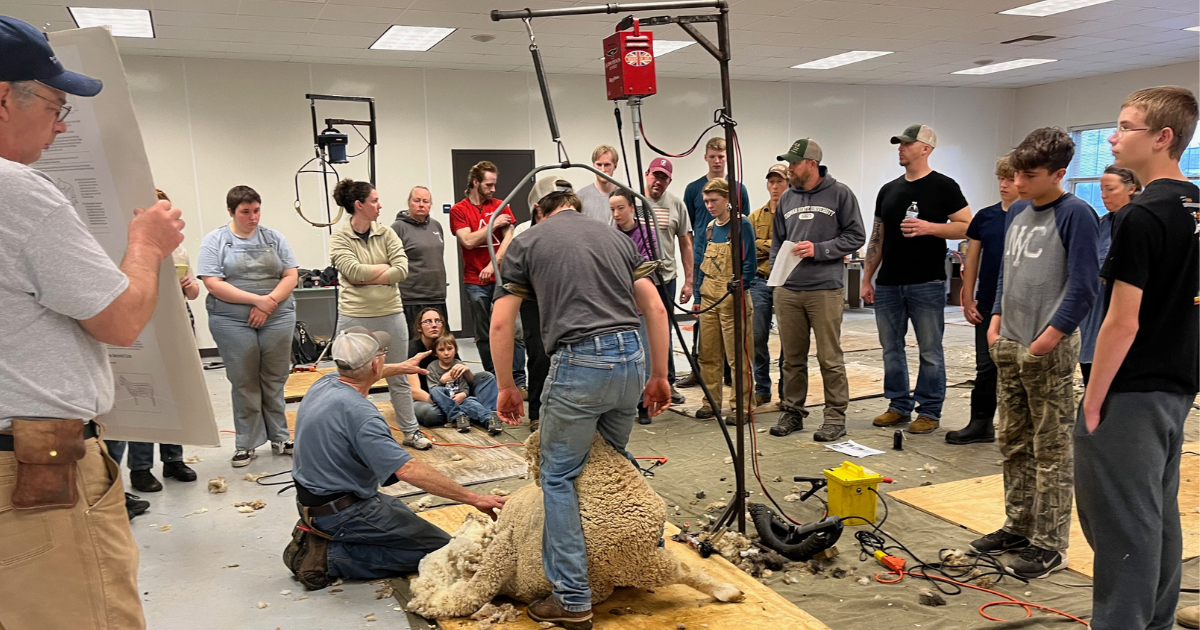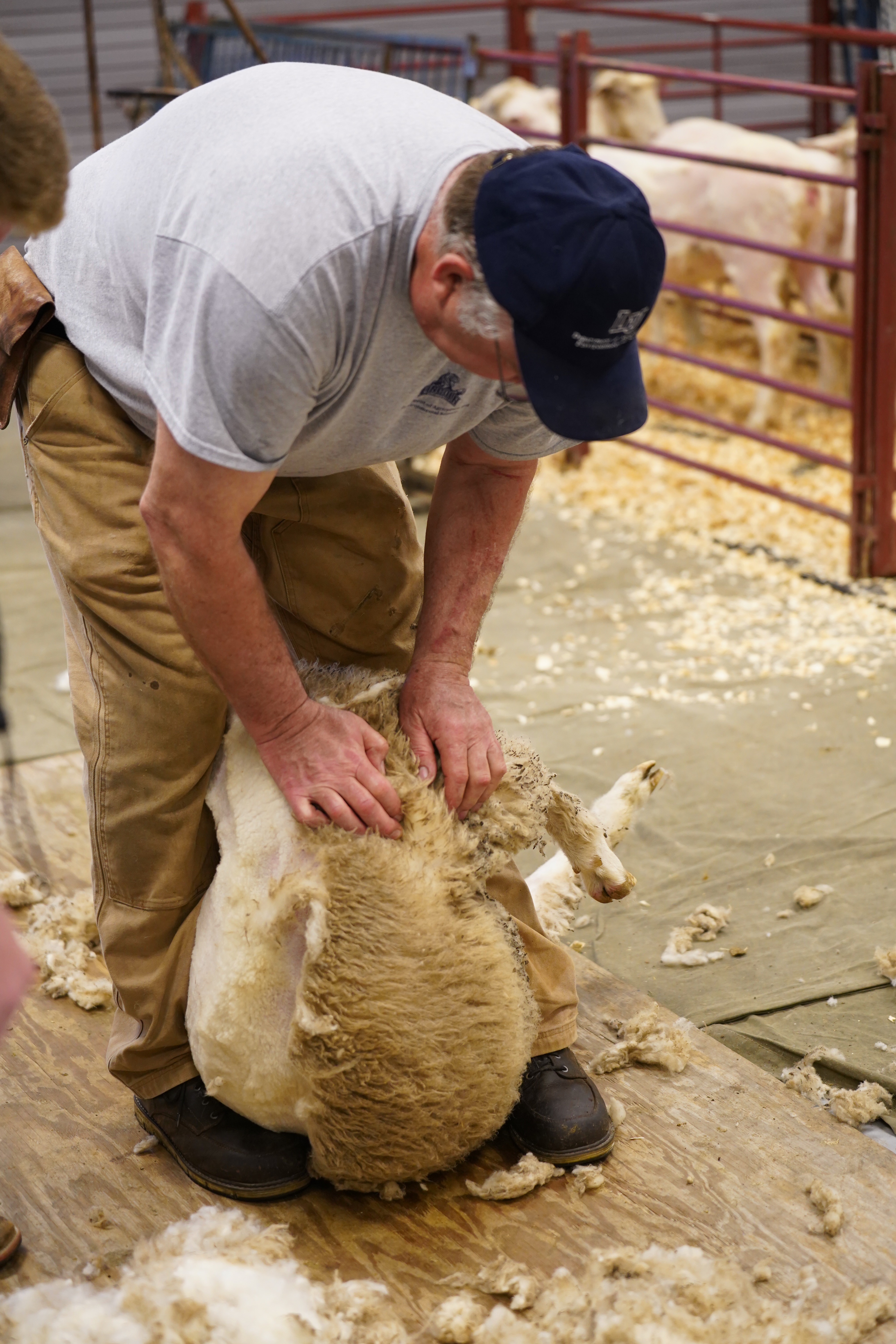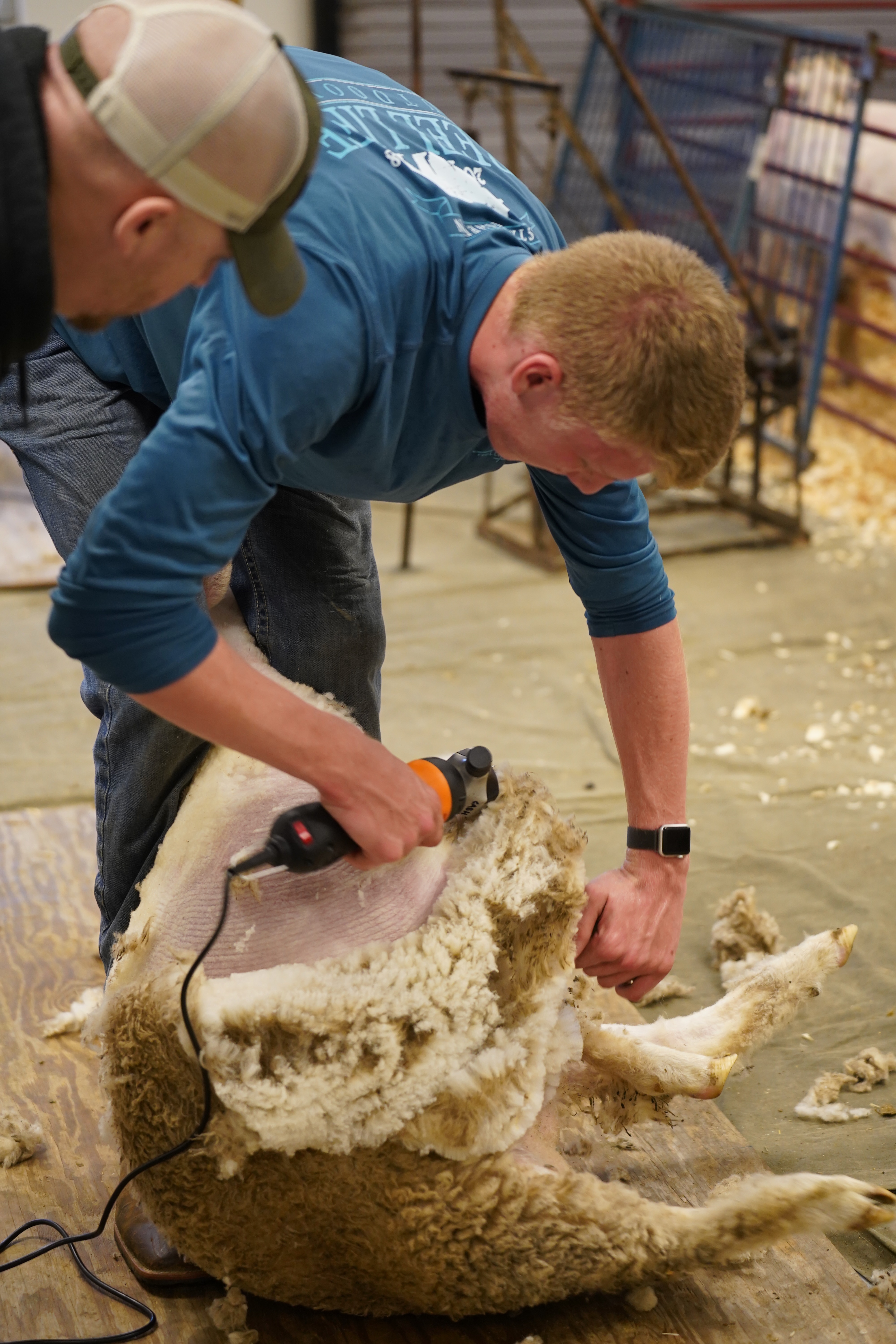Preserving Tradition: Sheep Shearing School Draws Enthusiasts from Across the Midwest
Office of Communications and Marketing
Young Hall
820 Chestnut Street
Jefferson City, MO 65101
 Students engaged in a live demonstration of the New Zealand shearing technique.
Students engaged in a live demonstration of the New Zealand shearing technique.
In dedication to carrying on an age-old craft, small sheep producers from Missouri, Arkansas, Kansas, and Illinois gathered at the George Washington Carver Farm for Lincoln University Cooperative Extension's (LUCE) 40th annual Sheep Shearing School. The training, held on March 6 and 7, attracted 20 participants and their families, all eager to immerse themselves in the art of efficiently shearing sheep and keeping the tradition alive.
"Most participants here want to learn the technique," shared recently retired LU employee and longtime training assistant Doug Moeller. "They want to learn to go from two hours of sheep shearing to two minutes." Moeller, alongside seasoned LUCE instructor Guy Frazier, taught the New Zealand method—a technique designed to ensure a quality wool clip while minimizing stress for both the sheep and the shearer.

LUCE Instructor Guy Frazier shares tips on successful sheep shearing with attendees during the 2024 Sheep Shearing School.
Throughout the two-day workshop, Frazier taught about proper setup, equipment maintenance, and animal care. Past attendees-turned-assistant instructors—Kevin Minish, Pietro Monticelli, Wyatt Davis and Virgil Davis—played a pivotal role ensuring everyone received effective hand-on training. They led small groups of two to four participants through the shearing "dance," balancing precise footwork and raw strength to skillfully manage a 200-pound animal as the razor glided over the wool.
Participants, young and old, donned their work attire and divided into groups to practice the New Zealand shearing technique. With clippers in hand and sheep straddled between their feet, participants worked together to shear the wool. Varied levels of experience were evident as some managed the sheep solo while others collaborated to handle more resistant animals.

A student dives into sheep shearing during hands-on practice session.
A returning participant for the third year, Miranda Weatherson shared that she enjoys raising sheep for the "farm-to-table experience." Weatherson, whose husband, Pietro Monticelli, served as an assistant instructor this year, underscored the importance of passing down these integral traditions to future generations, saying, "So many producers have hair sheep but then forget about the byproduct of wool. If we don't teach them, then nobody knows. We're really kind of losing that integral part of our heritage."
Amidst the growing trend towards self-sufficiency among homesteaders, small ruminants are becoming a popular alternative. Weatherson and her family from Grantsville, Missouri, traded their cows for a flock of ten sheep. Describing sheep as a "trifecta," they now reap the rewards of wool, meat, and milk production. Weatherson also spins wool into yarn to sell to knitters and make her own products to sell.
Although the homesteading movement in Missouri is gaining momentum, there's a nationwide shift from wool sheep to hair sheep breeds. Hair sheep have coats with more hair fibers than wool fibers, and their coats naturally shed, eliminating the need for shearing. Resistance to internal gastrointestinal parasites and foot problems also make these hair sheep more appealing as an ideal meat animal for small farms or homesteads.
Frazier, who shears between 2,000 to 2,500 sheep annually, is dedicated to nurturing the next generation of shearers and ensuring the continuation of this revered art form. He affirmed, "I'm trying to train as many people as possible because I can't do it all. So, if I can pass this on to somebody else, I'm more than glad to do it."
Applications for next year's shearing school will open in November. Space is limited to 20 participants, and all supplies are provided with the registration fee. For more information, contact bruemmerj@lincolnu.edu.
